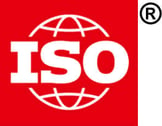Powder metal parts have become a major component in numerous applications thanks to their balance of tensile strength and ductility, low cost, corrosion resistance, great magnetic properties and high performance.
However, as powder metallurgy has become more common, more engineers are looking to join one powder metal part to another -- or to an entirely different type of metal. Naturally, the conversation then turns to welding.
So, can you weld powder metal parts? Keep reading to find out.
First, Understand How Powder Metal Parts are Made
Manufacturers make powder metal parts by placing a specific quantity of powder into a mold. Then a punch applies pressure to the powder and fills out the mold. The intense pressure of the punch compresses the powder into the desired form.
Once the pressed part is removed from the mold, it’s placed in a furnace in a process known as sintering. The sintering fuses the particles of the powder, resulting in a part that is either finished or semi-finished.
In many cases, this process allows for a net shape part that requires no secondary machining.
Why Powder Metal Parts are Challenging to Weld
There are several reasons why powder metal parts cannot always be welded in a manner common with wrought and cast metal parts -- all of which are related to the way these parts are created.
The challenges with welding also make powder metal parts difficult to machine, which is why it’s better to design both components and the end product in ways that will not necessitate machining. Fortunately, welding is possible if you take these challenges into account.
Some of the concerns with welding powder metal parts include:
Porosity
While the process of pressing and sintering powder can create extremely strong parts, it can also create a level of porosity that makes welding a risk. Sometimes the porosity is intentional; other times the porosity is the result of insufficient density.
The issues that arise with porosity include problems with thermal conductivity and thermal expansion. Porosity can also create space for impurities to set up shop, which can negatively impact welds.
Contaminants
Creating strong, reliable welds requires minimizing contaminants in the materials you are welding. The fact that powder metal parts can contain contaminants -- sometimes due to the porosity of the material and sometimes due to other factors -- can make welding these parts more difficult. If the contaminants are significant enough, they can make it impossible to weld the material.
As with all welding, try to to keep powder metal parts clean of:
-
Coolants
-
Lubricants
-
Cleaning solutions
This will ensure the best weld possible..
Carbon Content
Powder metal parts are often made with materials like iron-based mixes and then heated to diffuse carbon into the iron.
The lower the carbon content, the easier a powder metal part will be to weld. There are varying levels of carbon content in powder metal materials, so make sure you have a clear idea of the carbon content before your manufacturer welds the part.
Blends with 0.5% carbon content or lower are ideal for welding.
Density
The density of powder metal parts can vary considerably based on the:
-
Powder’s composition
-
Pressure used to create the structure
-
Sintering process
For optimal weldability, specify parts that have a density of at least 6.8g/cc or higher. Welds can be made with parts of lower density, but the reliability of the weld may be less than it would be with a higher density part.
Welding Techniques Used with Powder Metal Parts
Arc Welding
Gas metal arc welding has been shown to produce undesirable results with some powder metal parts. This welding method can lead to porous components.
Pulsed Plasma Arc Welding
Engineers have used pulsed plasma arc welding successfully used to weld powder metal parts. This technique allows your manufacturer to weld parts without the addition of filler metal.
Resistance Projection Welding
Projection welding is often used to weld powder metal parts due to the limited distortion produced by the process. It’s capable of welding both high-carbon powder metal parts and case-hardened parts.
Welding Powder Metal Parts Can Be Done with Skill and Planning
While welding powder metal parts does require careful planning and experience, it’s usually a reliable process if you approach it wisely. It simply takes extensive knowledge of the materials you’re specifying and the appropriate welding technique.



